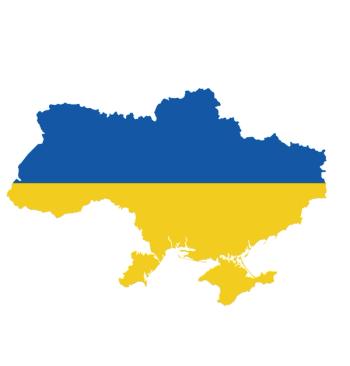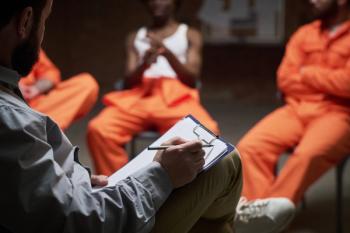
- Vol 32 No 7
- Volume 32
- Issue 7
Immigration and Post-Adolescent Psychology of Young Terrorists
Radicalization by Norwegian converts to the Prophet’s Ummah produced massive and terrible social consequences. The explanations offered may be pertinent to the current attraction that ISIS offers for too many young persons in many countries of the civilized world.
[[{"type":"media","view_mode":"media_crop","fid":"39891","attributes":{"alt":"© Photographee.eu/Shutterstock.com","class":"media-image media-image-right","id":"media_crop_4506869573117","media_crop_h":"0","media_crop_image_style":"-1","media_crop_instance":"4025","media_crop_rotate":"0","media_crop_scale_h":"0","media_crop_scale_w":"0","media_crop_w":"0","media_crop_x":"0","media_crop_y":"0","style":"height: 89px; width: 150px; float: right;","title":"© Photographee.eu/Shutterstock.com","typeof":"foaf:Image"}}]]Eight young men, one of them married, who lived near a small neighborhood by Lislebyveien Street in Fredrikstad, Norway (population 76,000), became jihadists; several of them died in Syria. A
Their radicalization and violent murderous hatreds represent and reflect an emotional solution of an aberrant “identity development of adolescence.”2 My answers explain the overt group behaviors that characterize a category of young persons whose actions and values appear to deviate markedly from those of the mainstream inhabitants of their civilized communities. (I try not to use psychopathological terms, a process we psychiatrists sometimes applied to characterize the 9/11 New York World Trade Center terrorists.)
Let’s assess the ethnic backgrounds of members of this collection of terrorists, all of whom were associated with the Norwegian radical Islamic group, Prophet’s Ummah.
Group characteristics
What is striking about this group of 8 men (and the wife of one of them) is that a minority of its members has familial roots in Norway. One Norwegian member appears to be mentally ill while currently hospitalized, and another, Yousef Assidiq has turned against Jihad. All the young men are in their mid-twenties. Longitudinal neuroimaging studies demonstrate that physically normal young adults who have gone through a normative large brain reorganization between the ages of 12 and 17 may still be adjusting to these changes in their twenties (I. Feinberg, personal communication, 2015). In general, almost all have evidence of a history of social turmoil beginning with adolescence: substance abuse (marijuana), scholastic failure, delinquency, minor criminality, brushes with the law, and familial turmoil. Their socioeconomic status was clearly lower than that of Norwegian peer families. Most of the young men also had a history of addictive drug misuse. The poverty-ridden, downtrodden background of these children of immigrants is a striking contrast with the saga of a 23-year-old Egyptian Muslim bodybuilder from a wealthy family who died while fighting with ISIS in December 2014.
This type of environment characterized the early childhood years of the perpetrators of the
But the members of the Norway group also share exaggerations of many normative emotional traits of adolescence: episodes of grandiosity and a sense of invulnerability, poor anticipation of danger, impulsivity, rebellion, drug seeking, poor sense of time, and frequent self-esteem fluctuations. In particular, young men are preoccupied with the strengths of the immature physique. Perceptions of dangerous bodily weakness may elicit compensatory grandiose actions.
The advanced pulmonary tuberculosis of Gavrilo Princip, age 19, may have been a significant factor motivating his assassination of Archduke Ferdinand in Sarajevo, Bosnia,
There is a suggestion of an interaction between sports and the training for radical terrorism through participation in competitive games. Athletics played an important developmental role with the suicide bombers (ages 16 to 23) from poverty-ridden Sidi Moumen, Morocco, who killed 45 persons in Casablanca in 2003.
A sustained effort to apply athletics constructively is artistically captured by the 2012 French film
Of course, brothers, no matter how similar they are, need not reinforce each other in performing murderous acts toward a common perceived enemy: in some cases, the enemy is the other. The story of Cain and Abel describes hatred of one brother for another. In the Greek play Seven Against Thebes, Aeschylus dramatized the hatred between the twins Eteocles and Polynices who fulfill the curse of Oedipus by killing each other.
One brother may be peaceful and the other murderous. Earlier this year, a radicalized Islamic man of 19 murdered 21 foreign tourists and a police officer at the National Bardo Museum in Tunis. One of his older brothers is a student of philosophy who
Brothers have the same genetic makeup, legacies of parenting, and personality similarities, and they share important childhood experiences sometimes producing exquisite empathic mutuality that is transformed into a folie à deux merger. The “brotherhood” concept has often been borrowed and exploited for political purposes. For example, in the US, the Aryan Brotherhood is a designation adopted by a white supremacist prison gang.
Identity formation
One sequence of normative developmental tasks during adolescence is “identity versus role confusion,” which
These children have several favorable successful possibilities for integrating their ethnicity into their larger sense of self. They may assimilate by adopting the majority culture’s norms, they may choose not to assimilate and only interact with persons from their native country, or they may become bicultural.9 But failure to travel any of these pathways when magnified by a brutal socio-psycho-economic environment may produce personality fragmentation and serious identity diffusion. (I am unable to judge the truth of Erikson’s formulations for adequate or deviant adolescent development but find them most apt to explain the genesis of the determined Norwegian youthful terrorists.)
Conclusion
Adoption of a radical, violent, destructive ideology is the emergency solution that I propose was used by most of the Norwegian converts to the Prophet’s Ummah. Their radicalization produced massive and terrible social consequences. The explanations I offer may be pertinent to the current attraction that ISIS offers for too many young persons in many countries of the civilized world.
Disclosures:
Dr Barglow is a Clinical Professor of Medicine and Psychiatry at the University of California Davis School of Medicine in Sacramento. He has written numerous articles about emotional consequences of severe trauma for soldiers and war veterans, rape survivors, traumatized children, and victims of other violence. He reports no conflicts of interest concerning the subject matter of this article.
References:
1. Higggins A. A Norway town and its pipeline to Jihad in Syria. New York Times. April 4, 2015. http://www.nytimes.com/2015/04/05/world/europe/a- norway-town-and-its-pipeline-to-jihad-in-syria. html. Accessed May 26, 2015.
2. Kroger J. Identity Development: Adolescence Through Adulthood. 2nd ed. Thousand Oaks, CA: Sage Publications; 2007.
3. Arnett JJ. Adolescent storm and stress, reconsidered. Am Psychol. 1999;54:317-326.
4. Chrisafis A. Charlie Hebdo attackers: born, raised and radicalised in Paris. Guardian. January 12, 2015. http://www.theguardian.com/world/2015/jan/ 12/-sp-charlie-hebdo-attackers-kids-france- radicalised-paris. Accessed May 26, 2015.
5. Weissman SH, Busch KG, Schouten R. The evolution of terrorism from 1914 to 2014. Behav Sci Law. 2014;32:259-262.
6. Ayouch N. Les Chevaux de Dieu. 2012 (French film).
7. Gall C. In Tunisia, one brother studied philosophy, another gunned down tourists. New York Times. April 2, 2015. http://www.nytimes.com/2015/04/03/ world/africa/in-tunisia-one-brother-studied- philosophy-another-gunned-down-tourists.html. Accessed May 26, 2015.
8. Erikson EH. Identity: Youth and Crisis. New York: WW Norton & Company, Inc; 1968:146.
9. Phinney JS. Stages of ethnic identity development in minority group adolescents. J Early Adolesc. 1989; 9:34-49.
Articles in this issue
over 10 years ago
Cultural Issues in Treating Geriatric Patients With Mental Illnessover 10 years ago
Pediatric ADHD and the Cultural Psychotherapeutic Modelover 10 years ago
Cultural Competence and LGBT Issues in Psychiatryover 10 years ago
Contemporary ECT for Depression Part 1: Practice Updateover 10 years ago
Intervention Helps Workers With Depressionover 10 years ago
The 2015 International Congress on Schizophrenia Researchover 10 years ago
Research That Can Change Clinical Practice in Psychotic Disordersover 10 years ago
Perspectives on College Student Suicideover 10 years ago
A Rational Suicide? Case Consultation and Quiz CommentaryNewsletter
Receive trusted psychiatric news, expert analysis, and clinical insights — subscribe today to support your practice and your patients.













